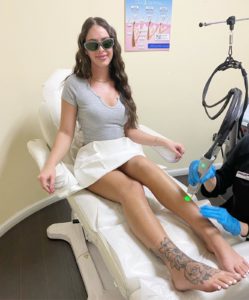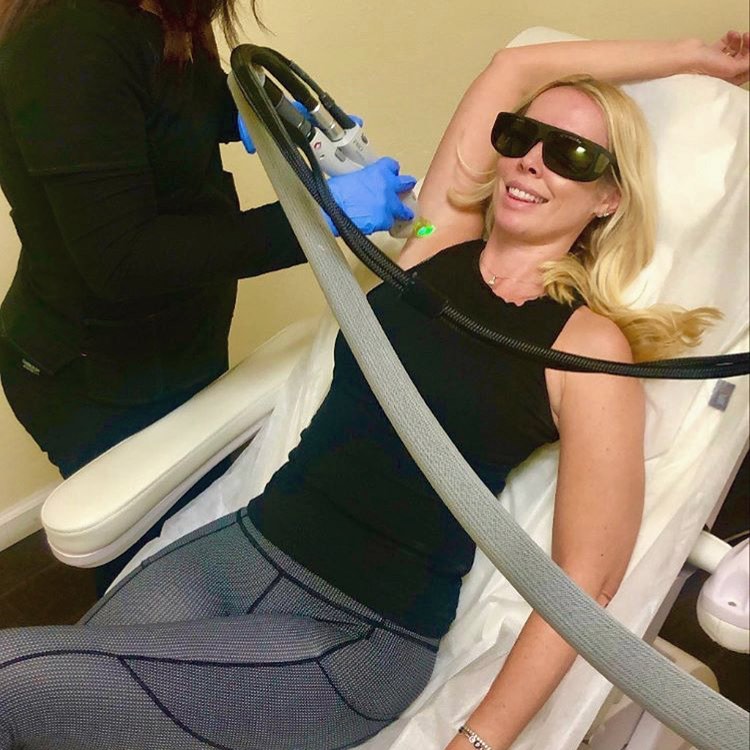Skin tags can be an unsightly and bothersome cosmetic concern for many individuals. Fortunately, there are effective techniques available to remove these pesky growths and achieve smoother, more flawless skin. In this article, you will explore various removal methods that have proven to be successful in bid farewell to skin tags. Whether you prefer at-home remedies or professional treatments, you will discover a range of options to suit your needs. Say goodbye to the frustration of skin tags and embrace a confident, tag-free appearance.
Understanding Skin Tags
Skin tags, medically known as acrochordons, are small, soft, non-cancerous growths that typically appear on the skin. They are often flesh-colored or slightly darker and may be either smooth or wrinkled in texture. Skin tags are usually attached to the skin by a thin stalk, giving them a polyp-like appearance. These growths are commonly found in areas where the skin folds or creases, such as the neck, underarms, groin, and eyelids. While skin tags are harmless, they can cause discomfort or a cosmetic concern for some individuals.
Causes and Risk Factors of Skin Tags
The exact cause of skin tags is still unknown, but certain factors have been identified as potential contributors to their development. Friction or rubbing of the skin against skin or clothing, particularly in areas where the skin folds, can trigger the formation of skin tags. Hormonal changes, such as those that occur during pregnancy, may also increase the likelihood of developing skin tags. Furthermore, being overweight or obese and having a family history of skin tags are considered risk factors. However, skin tags can occur in individuals of any age or body type.
Common Locations on the Body Where Skin Tags Occur
Skin tags can appear on various parts of the body, but there are specific locations where they are commonly found. One of the most prevalent areas for the occurrence of skin tags is the neck, particularly along the folds of skin. The underarm area, also referred to as the axilla, is another common location. Skin tags can also develop in the groin area, where the skin rubs together due to movement or heat. Additionally, the eyelids, particularly the upper eyelids, may be susceptible to skin tag formation. Other areas where skin tags can occur include the chest, back, and buttocks.
Home Remedies for Skin Tag Removal
If you prefer to try natural and non-invasive methods for removing skin tags, several home remedies have shown promising results. One popular option is tea tree oil, which has antiviral and antifungal properties. Apply a few drops of tea tree oil to a cotton ball and gently rub it onto the skin tag twice a day for a few weeks. Another home remedy is apple cider vinegar, which is believed to help break down the tissue of the skin tag. Soak a cotton ball in diluted apple cider vinegar and apply it to the skin tag, securing it with a bandage. Repeat this process multiple times daily until the skin tag falls off. Baking soda mixed with castor oil can also be formed into a paste and applied to the skin tag, covering it with a bandage and repeating daily. Lastly, the duct tape method involves covering the skin tag with a small piece of duct tape for several days until it falls off.
Over-the-Counter Treatment Options
If home remedies do not provide satisfactory results, there are various over-the-counter treatment options available for skin tag removal. Topical creams and solutions containing ingredients like salicylic acid or hydrogen peroxide can help to gradually dissolve the skin tag. These products are often applied multiple times per day until the skin tag disappears. Freezing kits, commonly used for wart removal, can also be effective for skin tags. The freezing solution causes the skin tag to freeze and eventually fall off. Another option is using skin tag removal patches, which typically contain a medicated disc that is placed over the skin tag and left in place for a specified duration. The disc helps to separate the skin tag from the surrounding tissue, leading to its removal. Additionally, electrocautery devices that use heat to burn and remove the skin tag are available for purchase.
Medical Procedures for Skin Tag Removal
For more stubborn or larger skin tags, medical procedures performed by a dermatologist may be necessary. Cryotherapy, which involves freezing the skin tag with liquid nitrogen, is a common method. The freezing causes the skin tag to die and fall off within a week or so. Surgical excision is another option, particularly for larger skin tags. During this procedure, the dermatologist will numb the area with a local anesthetic and use surgical instruments to remove the skin tag. Electrocautery, similar to the home remedy using an electrocautery device, utilizes a concentrated heat source to burn the skin tag off. Lastly, laser therapy can be employed to target the pigment in the skin tag, causing it to break down and eventually fall off.
Choosing the Right Removal Method
When considering skin tag removal, it is important to consider several factors before deciding on a method. Home remedies may be suitable for small, painless skin tags, but if the skin tag is large, bothersome, or located in a sensitive area such as the eyelids, consulting a dermatologist is recommended. Over-the-counter treatments can be effective for many individuals; however, it is essential to follow the instructions carefully and be aware of any potential side effects. If home remedies and over-the-counter treatments do not yield satisfactory results, it may be necessary to seek medical procedures for removal. Consulting with a dermatologist allows for a professional evaluation and recommendation based on the specific characteristics of the skin tag.
Preparing for Skin Tag Removal
Before attempting any skin tag removal method, it is vital to properly prepare the affected area. Start by cleansing the skin thoroughly with mild soap and water to remove any dirt or bacteria. Once the area is clean, it is important to gather the necessary tools and supplies according to the chosen removal method. For home remedies, this may include items like cotton balls, tea tree oil, apple cider vinegar, baking soda, and bandages. If opting for over-the-counter treatments or medical procedures, be sure to have the appropriate products or equipment readily available. It is advisable to carefully read and understand the instructions for each removal method before proceeding.
Performing Skin Tag Removal Safely
To ensure a safe and successful skin tag removal, certain precautions should be taken. Before beginning the removal process, it is crucial to sanitize hands and any equipment that will be used, such as tweezers or scissors. This helps minimize the risk of infection or further skin irritation. If the removal method is expected to cause discomfort, applying an anesthetic cream or gel beforehand can help numb the area and alleviate pain. During the removal process, it is important to follow proper techniques as instructed for each method. This includes applying the recommended solution, cutting or freezing the skin tag precisely, or using the electrocautery device correctly. Taking these precautions will help minimize potential complications and ensure a successful removal.
Aftercare and Recovery
Once the skin tag has been successfully removed, it is crucial to provide proper aftercare to promote healing and prevent infection. Keep the treated area clean and dry, avoiding excessive moisture or sweat accumulation. Apply any recommended ointments or creams as directed by the removal method or dermatologist to help soothe the area and aid in the healing process. It is important to resist the temptation to pick or scratch the treated area, as this can delay the healing process and increase the risk of infection. Be vigilant and monitor the area for any signs of infection, such as increased redness, swelling, or drainage. If any complications arise, such as persistent bleeding or severe pain, it is essential to seek medical attention promptly.
Get Your Free Consultation Today
Prevention of Skin Tags
While it may not be possible to prevent all skin tags, certain measures can reduce the risk of their development. Maintaining a healthy weight is important, as excess weight can contribute to the friction and irritation that can lead to skin tags. To minimize friction, it is advisable to avoid wearing tight or restrictive clothing, particularly in areas prone to skin tag formation. Practicing good hygiene, including regular bathing and proper drying of skin folds, can help prevent bacterial buildup and irritation. Lastly, regularly inspecting and monitoring your skin can help identify any new skin tags early, allowing for prompt treatment and removal if desired.
Conclusion
Skin tags can be a common nuisance for many individuals, but effective removal techniques are available for those seeking to bid farewell to these unwanted growths. Home remedies such as tea tree oil, apple cider vinegar, baking soda, and duct tape can be tried initially for small skin tags. Over-the-counter treatments like topical creams, freezing kits, patches, and electrocautery devices offer additional options. For larger or bothersome skin tags, medical procedures such as cryotherapy, surgical excision, electrocautery, or laser therapy can provide effective removal. When considering skin tag removal, it is important to consider personal preferences, the severity of the skin tag, and the location of the growth. Consulting with a dermatologist can provide valuable guidance and ensure the chosen removal method is appropriate and safe. Remember to prioritize proper preparation, perform the removal safely, and follow appropriate aftercare measures to promote healing and prevent complications. By taking preventive measures and maintaining good hygiene, the occurrence of future skin tags can be minimized. Therefore, with the availability of various removal techniques and a proactive approach to skin health, it is possible to bid farewell to skin tags and maintain healthy and blemish-free skin.


